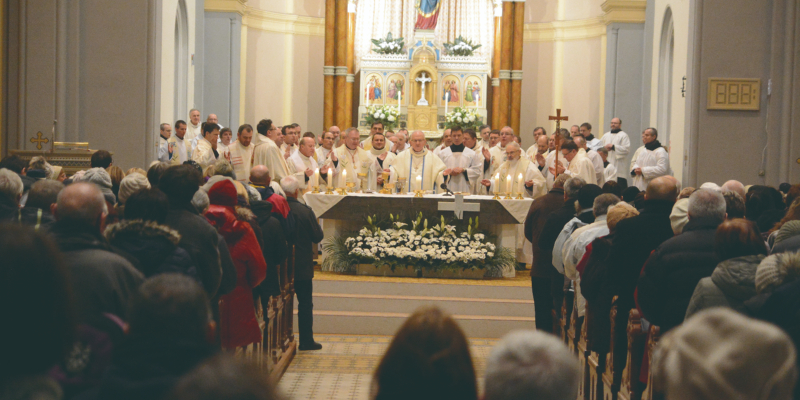The Czech shrine of Filipov recently celebrated 150 years since the apparition of Our Lady, in a place that bears witness to the special solicitude of the Mother of God for those suffering from illness or persecution.
Filipov is a Marian shrine located in Jiřikov, a village of 3,700 inhabitants in the north of the Czech Republic, in the Sudetenland region, a few meters from the German border. As a result of an unprecedented event, the apparition of the Virgin Mary to a terminally ill woman, a church for pilgrims was consecrated here at the end of the 20th century. The place soon became a focus of Marian devotion, with processions of up to 6,000 people, and came to be known as "the Lourdes of northern Bohemia".
After several decades, Filipov has also been a symbol of the rapprochement of two nations, the Czechs and the Germans, very much at loggerheads in the 20th century as a result of nationalism. Like the rest of the Sudetenland, Filipov was annexed by Adolf Hitler in 1938 and, after World War II, was recovered by Czechoslovakia, and all its former inhabitants were expelled.
Maria Kade's story
At the origin of the shrine is the story of Maria Magdalena Kade (1835-1905), a weaver who, like the vast majority of the inhabitants of this corner of the Austro-Hungarian monarchy, belonged to the German-speaking minority. Many worked in the textile factory across the border in the neighboring town of Ebersbach-Neugersdorf.
Kade, in poor health since the age of 19, was eventually diagnosed with pneumonia and meningitis. She began to suffer spasmodic seizures, and her entire body was covered with ulcers. At the age of 29, she became bedridden, where she received the Anointing of the Sick, and doctors said her days were numbered.
On the night of January 12-13, 1866, at four o'clock in the morning, Our Lady appeared to Kade, who was very devoted to the Mother of God, and, as she later told, said to her in German: "My daughter, from today on you will be healthy". She, who was thought to be dead, jumped out of bed and, from that day on, began to live a normal life, to the astonishment of the neighbors. The doctors certified that this was inexplicable.
A small chapel was built on the site of the Kade house, which, after its enlargement, has been incorporated into the present Minor Basilica of Mary Help of Christians. This place has experienced moments of great prosperity, but its activity was silenced during the communist persecution in the second half of the 20th century (1948-1989). Despite the efforts of the totalitarian regime to prevent the arrival of pilgrims, they always managed to keep the flame burning. A flame to which the religious communities made a decisive contribution.
The truth is that "the chain of Masses on the anniversary of the apparition was never interrupted," said Marketa Jindrová, who explains how the communists blocked the church door and left the site within a specially guarded border strip, which required many obstacles to be overcome to reach the shrine, including police interrogations.
Our Lady's intercession, especially felt in Filipov, has also inspired initiatives for the spiritual renewal of the Czech nation. Today this place receives numerous faithful from both sides of the border, with Masses celebrated using German and Czech. In addition, Filipov is a favorite place of pilgrimage for Catholics from Serbia-Lusatia, a minority of Slavic origin who live in German Saxony and continue to preserve their Roman faith. During the Marian festivities in May there is a large influx of German believers. The Candlemas procession is very typical.
Bishop Jan Baxant of Litoměřice, explains to Palabra that "leaving home in winter at midnight to go to this frozen basilica in Filipov is, for us, like a mini-Compostela or mini-Everest. "We very often receive German bishops," adds Jozef Kujan, Salesian parish priest and rector of the basilica.








